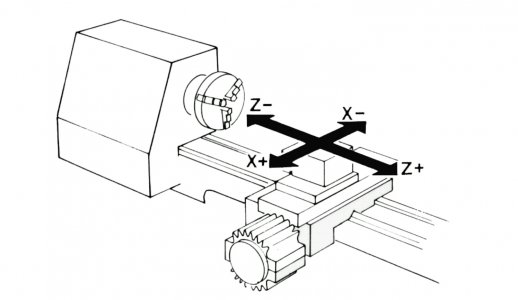If you need even higher resolution for facing you can use an old machinist's trick. Rotate the compound over so the angle between it and your work is 30 degrees. Now when you advance the compound .001" the tool moves .0005" along Z. To get a 10X improvement you would need a 5.7 degree angle, but you may not be able to rotate the compound that far over. Probably achievable, 11.54 degrees will produce a 5X improvement but you'd have to do a little mental or calculator arithmetic to turn the compound position into the actual Z position.
In this approach, the compound moves along the hypotenuse of a triangle. The side opposite the angle I described is Z, so Z/C = sin(theta), where "C" is the distance the compound moves.
The angle may or may NOT be the same as what the dial on your compound indicates because different lathe manufacturers may use different conventions for the angle. For mine, I would have to set the compound over (90 - 30) degrees because "0" is parallel to the spindle axis.
One thing to keep in mind is that now when you move your compound you are moving the cutter on both axes. Not an issue for facing or (usually) when turning to a precise OD, or when thru-hole boring to a precise ID. But if you're going to do something like cutting pockets for press-fit bearings, you also will cut a little deeper into the bottom of the pocket. Maybe an issue, maybe not, depending on what your application is.
For very fine cuts you will need a very sharp tool, either an insert with ground edges or HSS.


